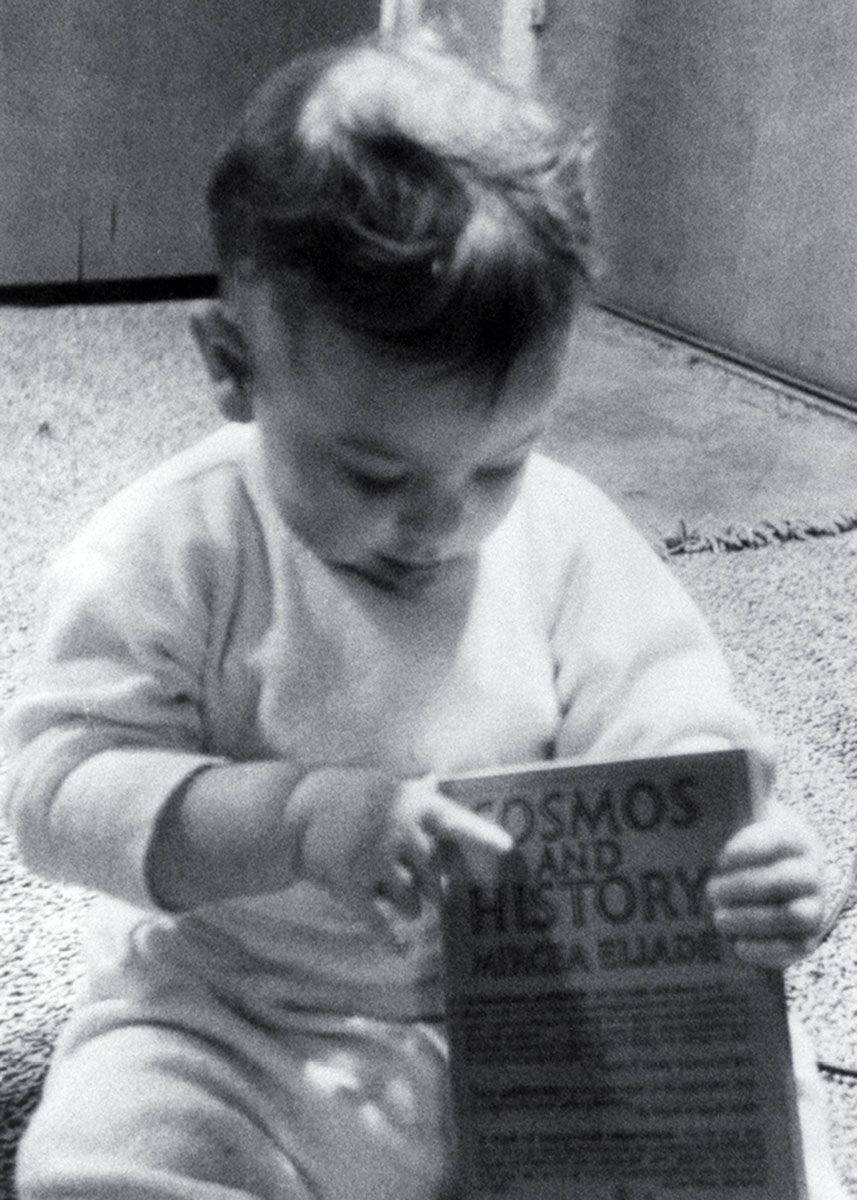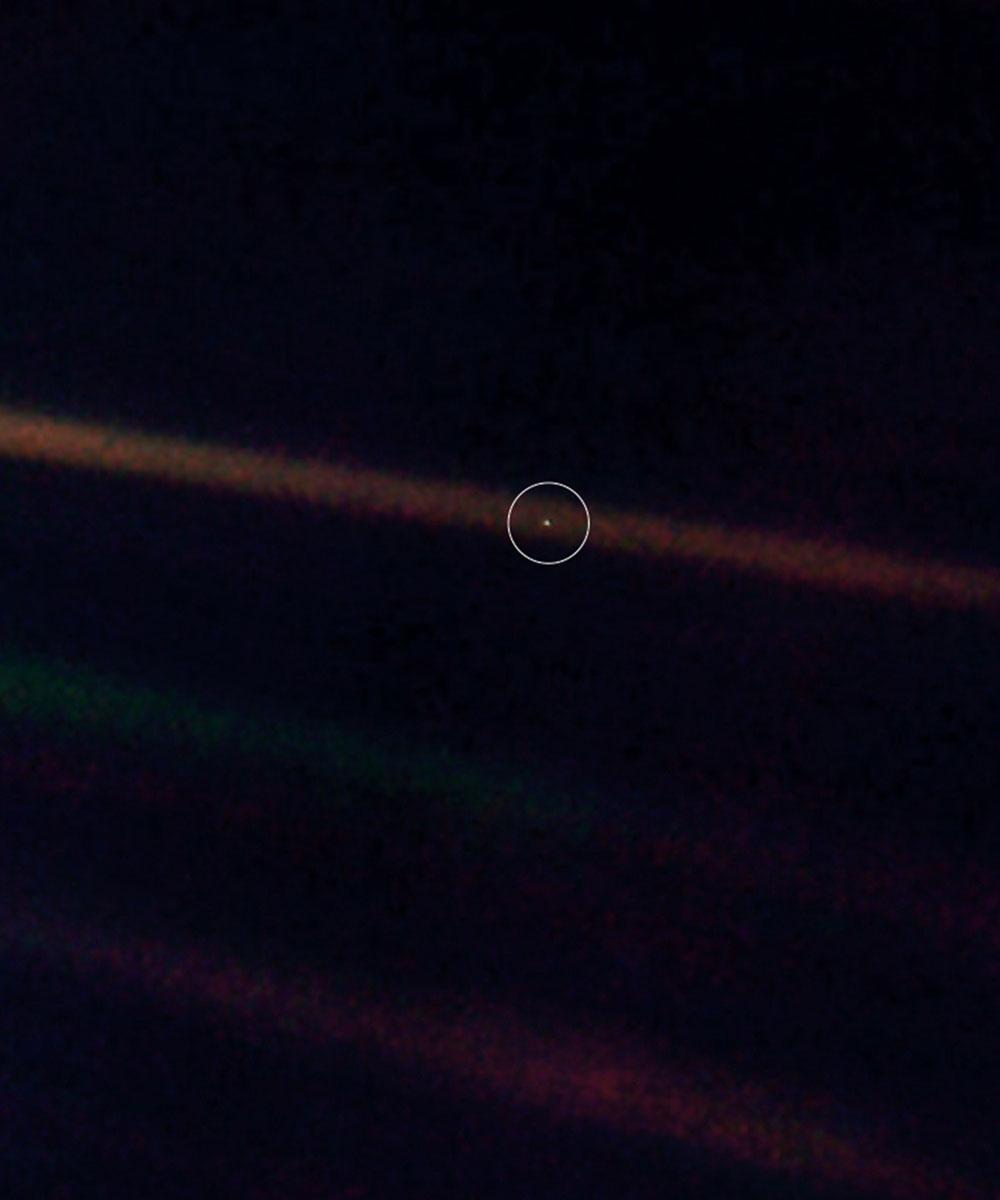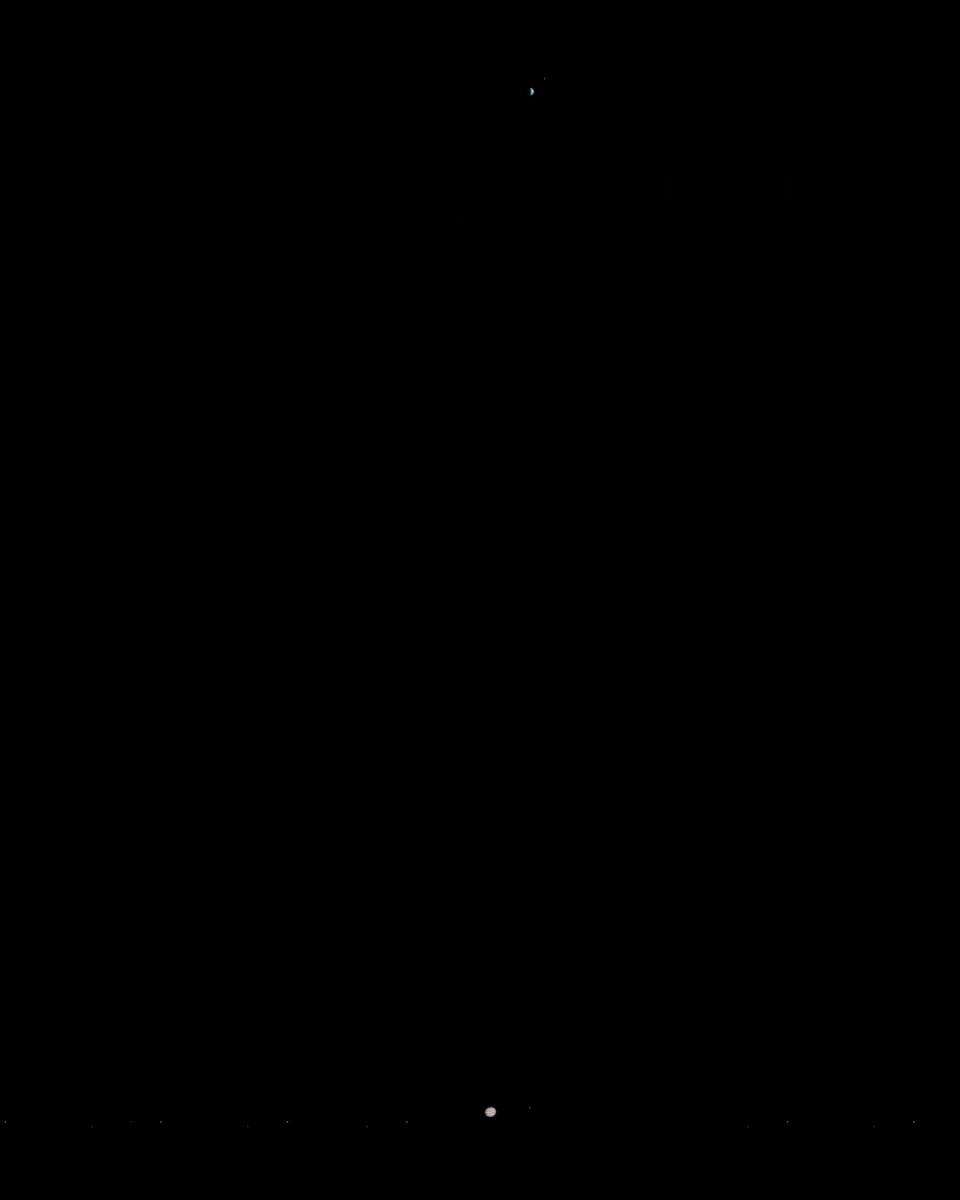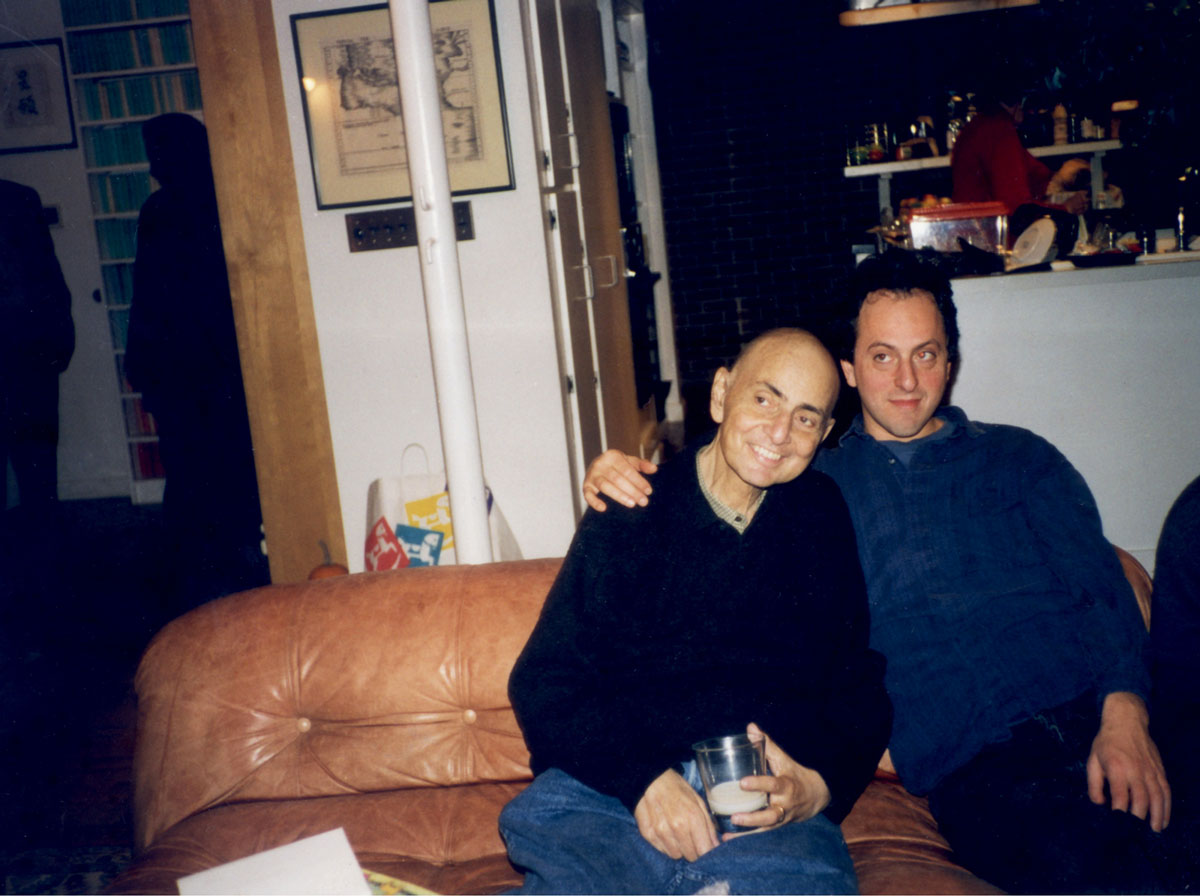Stardust Memories
Exploring the emotional universe
Dorion Sagan
The true harvest of my daily life is somewhat as intangible and indescribable as the tints of morning or evening. It is a little star-dust caught, a segment of the rainbow which I have clutched.
—Henry David Thoreau
Quantitatively, dust refers to solid particles with diameters of less than five hundred micrometers. A micrometer, also known as a micron, is a millionth of a meter, or 0.000039 of an inch. The eye of a needle is 750 microns wide, enough to get some camel dust through. The diameter of the period that ends this sentence is about 450 microns—it would make a nice little piece of dust if it could be liberated from the prison of this page.
But despite its physical insignificance, dust has outsized negative connotations. It is an avatar of the unclean. It is the ensign of entropy, of buildings destroyed or neglected, matter without purpose. Dust is what gathers on books that are not read, on cabinets and shelves. It is the figure of the fragment, of division and disintegration, of the unswept, the unloved, the overlooked, and discarded. It is what Tad Allagash snorts in his comical attempt to hoover any remaining traces of “Bolivian marching powder”—cocaine—in Jay McInerney’s 1980s novel, Bright Lights, Big City. To be clear, a Buddhist saying goes, you must wipe the dust from the mirror of your mind.
Much of household dust is keratin, the main protein of skin. Human skin sheds continuously. You lose about 1.5 grams of it per day. The detritus does not go entirely to waste. First, it is decomposed by fungi, who like it moist. Human flakes predigested by fungi are a staple for Dermatophagoides farinae, Dermatophagoides pteronyssinus, and Euroglyphus maynei. These mite species excrete protease enzymes that linger in mattresses and furniture—until the comparatively colossal rear end of a person sits down, at which time they are released in sometimes invisible puffs. The allergenic dust is a main reason for indoor sneezing, itching, and irritated eyes.
But dust ain’t all bad. Illuminated by slanting rays, it becomes pixie dust. Like a wink of the Lucretian real behind all mythology, it becomes a princess kissed by the sun. Thus, this same humble substance that builds on bookshelves, that darkens corners and lies flat on surfaces in an apparent effort to disguise its pitiable dishevelment (and why shouldn’t it, after all, for what is dust but a debased form of dirt?), this asthmatic antithesis of the grandeur of existence, this figure of the unwanted so unremarkable it often escapes even negative attention, this forerunner of filth on the clichéd white glove of the fastidious housecleaner, this accoutrement of the homeless, this essence of crumbling, sometimes swirls and reflects, like glitter, happy to be free of the mirror of our minds.
A dust grain can be a world. In Dr. Seuss’s Horton Hears a Who!, a perspicacious elephant listens to a talking speck which turns out to be a tiny world on a grain of dust, one city of which, Whoville, contains a bustling community of humanoid Whos. I read the Seuss book to my son. It was a crash course in imaginary microbiology and crypto-anthropology; its lesson was that within what we overlook are sometimes rich and unsuspected worlds.
• • •

When I was eighteen, in 1978, I would sometimes smoke angel dust in the bleachers with the black kids at lunch. This was in LA. My fellow students bought it sprinkled on parsley. This is a dangerous drug that can cause very bad reactions. I was lucky that, for me, it just led to pleasant numb feelings under the California sun.
My father Carl was filming the Cosmos series for television at the time, and I was living with him and his second wife, sharing a room with their son, my seven-year-old half-brother Nick, now a successful science fiction writer. It was the first time I had lived with my father since my parents divorced when I was five. My dad let me hang out in his trailer, which had belonged to Marlon Brando, on the lot at KCET in LA, where I would listen to punk rock on FM radio. I was from the East Coast, out of place, and had no friends to speak of. There was one girl I had my eye on, but that was about it. Blair High School was ethnically partitioned, one-quarter Hispanic kids, one-quarter black kids, one-quarter Asian kids who gravitated toward studies and chess club, and one-quarter spoiled white kids. In gym, I had the chance to take modern jazz dance. There was only one other boy in the class. He was tall and effeminate, and got in a fight with a very dark girl half his size but twice as fast. She whipped off her two earrings, he whipped off his one, and they started flailing away at each other. This led to him getting kicked out. The white teacher asked me to stay after and asked me what I thought of the situation. I asked her if she was asking me because I was the only guy, and she said yes. “But you’re the only white girl in the class,” I said.
The next day after class, I was jumped by several boys on the steps of the little building past the pool. Phyllis, one of the black girls who knew me from the bleachers, was by the tennis courts and yelled, “Just run, White Boy, as fast as you can to the Principal’s office. Don’t look back.” I did and identified the kids. For a few days, I stayed away from school, accepting my stepmother’s painkillers, which she had for her back pain and which allowed me to forget about the fact that I’d have to return to school once the bruises and swelling on my face died down. When I returned to school, my tough black friend “Blue” informed me the kids I’d identified got kicked out and that there was a contract out on me. I did not take this seriously, considering it movie bluster inspired by The Godfather.
Aside from Blue, my only other friend at the time was Tim, a white boy who was gay and had an older boyfriend who was a professional therapist. One day, Tim and I were in my room listening to my David Bowie albums, whose songs like “Starman” and “Life on Mars” I half-hoped to share with my dad (not so much “Space Oddity,” I explained, which was too popular). My half-brother, Nick, was playing superhero and jumped from the arm of the couch toward Tim, who stepped away. When he hit the floor, my stepmother had enough. She insisted my father speak with me. Soon thereafter, to my smug amusement, he lectured me, giving a rationalist discourse on natural selection as the basis for a normal heterosexual relationship. He underscored the evolutionary uselessness of Eros diverted from its natural goal. Instead of the Old Testament, he was appealing to Darwin to make the same point.
I was glad he was paying attention to me, even if it was negative attention. The stories of neutron stars a spoonful of which weighed tons, of black-hole portals to different places and times, and of higher-dimension objects moving through lower-dimension worlds that he’d told me as a boy, he was now sharing with the nameless masses. Why, my unconscious must have wondered, was he spreading his message about contacting life in outer space to millions when I, his firstborn, had been neglected? Was I mere human dust, disposable detritus taken root in the fertile medium of my microbiologist mother, only to be forever after confined to the plutonic outskirts of his emotional universe? At least in Adriatic Italian dialect, as I would learn two years later from my college girlfriend, whose own undivorced parents were bhang-smoking partiers on Cape Cod who welcomed me into their home, there was a name for the dust you swept up—mundessa. Ah, to be embraced, named, recognized, even if only momentarily, on the way to the eternal dustbin.
• • •

Dust’s relegation to a trope of dirt and insignificance, entropy and loss, is belied by its astronomical grandeur. And few, if any, have been more eloquent on this grandeur than my father, whose own bones now gather the stuff in sites next to his parents, moved from Florida to accompany him in Lakeview Cemetery in Ithaca, New York. From Martian dust storms as part of the genesis of his thoughts on how dust and smoke could affect life on Earth, to his study of Triton’s streaks as windblown dust, to his “pale blue dot” speech, perhaps his most beautiful, in which he calls Earth seen from space “a mote of dust,” my father took dust deadly seriously. And he led others to do so. He drew the world’s attention to the role of particulate matter in blocking out light. Extrapolating from Martian dust storms, he tirelessly warned of a nuclear winter, the unsuspected result of smoke and dust rising in the aftermath of a superpower confrontation. The darkening blanket would, he suggested, shut down agriculture on a global scale. His advocacy and interaction with Soviet scientists played a role in ending the Cold War—which, ironically, was inaugurated by the Soviet launch of the Sputnik satellite that set off the space race and the attendant massive funding that made his spectacular career in space science possible.
My father was deeply moved by the tiny blue speck the Earth became when NASA, partly due to his advocacy, directed Voyager 1 to turn back in 1990 and photograph our planet. At the edge of our solar system, Voyager 1 relayed an image in which Earth was less than a single pixel (0.12 pixels) in size. That was us—a speck. My father’s point was that every historical event, every sinner and saint, every loved person—and Voyager started relaying images on Valentine’s Day—lived out their lives on this turquoise dot. Some 3.7 billion miles from its source, our planet looks like “a mote of dust suspended in a sunbeam.”
Although he died in 1996, my father would also have liked another image, taken 8 May 2003 by the Mars Orbiter Camera of the Mars Global Surveyor, when Earth and Jupiter were aligned with Mars. Earth was about 86 million miles away and Jupiter almost 600 million miles away. Because Earth is closer to the sun than Mars, Earth appears half-illuminated, exhibiting a phase, like the moon: a crescent Earth. Blown up, the image shows our moon, as well as Callisto, Ganymede, and Europa, three of the moons of Jupiter and the inspiration for characters in serial adventure stories my father used to tell me, my brother Jeremy, and our friend David Grinspoon (now a professional astronomer) when we were children.
When my father was a child, his mother took him to the Brooklyn Public Library and introduced him to the librarian so he could get an answer to his question, “What are the stars?” After struggling with a boyhood facial tic, he overcame his shyness to ask the question and a few moments later the librarian, saying she had just the thing, came back with a book on movie stars. Later, he became a television star. In Cosmos, he liked to talk about how we are “star-stuff.”
• • •

We are not exactly stardust. The scientific definition of dust does not distinguish between mite droppings and pulverized diamonds streaming outside a cosmically careening spaceship. But dust must be solid, and stars are gas. Our Milky Way galaxy, with some four hundred billion stars, has a lot of dust. There is cosmic dust—space particles which may be only a few molecules in size—which takes different names depending on its location: intergalactic dust exists between the galaxies; circumplanetary dust around planets, such as in the icy rings of Jupiter and Saturn; interplanetary dust between planets; and interstellar dust between the stars themselves. Solid dust only forms about 1 percent of the interstellar medium, with hydrogen and helium gas forming most of the rest of it. Hydrogen, as H2O, is the most common element in our bodies, as well as in stars, which turn it into helium in their core.
We are star-stuff also in the sense that not only hydrogen gas but other elements that come into being inside stars are distributed when they explode. A normal-sized star produces pressures and temperatures that turn hydrogen into heavier helium, but a supernova with twenty to one hundred times the mass of our sun transmutes elements in layers like an onion via nuclear reactions in a natural alchemical process called nucleosynthesis. These elements are recycled when new stars, and planets, form. Our earth formed with the other planets and the sun from a rotating disk of ice, gas, and dust. Near the center of the protosolar nebula, intense pressures and temperatures vaporized debris, sending lighter materials away from the aggregating center and leaving grains of rock and dust consisting of heavier elements such as iron, silicon, and carbon to form the inner planets Mercury, Earth, Venus, and Mars, as well as their moons. Sly and the Family Stone were on the same cosmic track as my father when they sang, “Everybody Is a Star.”
It would be interesting to deconstruct dust, but dust, as the fragmentary end state of solid matter, is already deconstructed. After the recently contested Iranian elections, in which the Interior Ministry declared Mahmoud Ahmadinejad winner by a “landslide,” he tagged protesters as “dust and pebbles” who within “the transparent river of the Iranian nation” would find no place to “shine.” The Bible, presciently anticipating modern knowledge of ecological recycling, advises us not to set store on things of this world with its tantalizingly transient treasures, as the matter of our bodies moves from earth to earth, ashes to ashes, dust to dust. But dust deserves its reconstructive due. Here astrobiology helps. It’s possible that some dust in space harbors life. Life, as bacteria, can be extremely hardy. Bacteria live in solid rock on this planet a mile beneath Earth’s crust. Bacterial spores are resistant to desiccation and radiation, and bacteria show far more metabolic diversity than all animals and plants combined. It is also possible that solar winds can distribute Horton-Hears-a-Who-sized dust grains containing bacteria across the universe, although they might not survive the cosmic rays. The Greek sage Anaxagoras gave this idea of a cosmos sprinkled with universe-traversing life its name, panspermia, from the Greek for “all seeds.” Swedish naturalist Svante Arrhenius liked the idea. So did Francis Crick, co-discoverer in 1953 of the structure of the DNA molecule (which discovery, it has recently been reported, was accompanied by the ingestion of low levels of LSD). When my father positively reviewed Crick’s version of panspermia, which he detailed in his book Life Itself, I protested, “How does moving the problem of life’s origin into outer space explain anything? It just transports the location of the problem.” He conceded I might be right, but his heart didn’t seem in it. In any case, Earth itself is in space, so even if life evolved here, it evolved in space.

Panspermia has the power to reinvigorate our notion of dust from a figure of neglect and unimportance to one of essential substance. Working with Sir Fred Hoyle (who coined the term “Big Bang”), the astronomer Chandra Wickramasinghe found decades ago that the infrared signatures of dust seen in all directions by peering astronomers matches the wavelengths of dried bacteria, suggesting that the cosmos might be full of bacterial dust. More recently, with his colleagues at the Cardiff Centre for Astrobiology, Wickramasinghe calculated that radioactive material such as aluminium-26, injected into our solar system during its formation from shock waves emanating from a nearby supernova explosion, heated the frozen centers of comets to produce subsurface oceans. Provided a liquid medium, bacterial dust may thus have come to life inside these hurling comets. Rocky on the outside, watery on the inside, they invert the composition of playground bullies’ rock-filled snowballs. These astral bodies may be legion among the hundreds of billions of comets flying about just in our own solar system. Photos such as those of comet Tempel 1 taken by the Deep Impact probe in 2005 show evidence of ice core melting, which might happen as comets approach stars or burn through atmospheres. So maybe bacterial dust can stow away, sometimes coming to life inside spherical lakes, where they live in the dark inside whizzing comets for perhaps millions of years. And if one of the comets hits—voilà! They have light and the opportunity to evolve photosynthesis. Within a starry firmament filled with particles, a cosmos of violence and transformation, everything, even germs careening through space, may someday get the opportunity to shine.
Dorion Sagan is a writer based in Toronto and Amherst, Massachusetts. He has co-authored What is Life? (University of California Press, 2000) with Lynn Margulis, Into the Cool (University of Chicago Press, 2006) with Eric D. Schneider, and Death & Sex (Chelsea Green Publishing, 2009) with Tyler Volk.